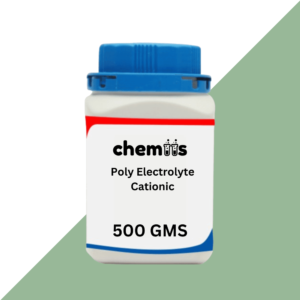Sodium Hydroxide Pellets, commonly referred to as lye or caustic soda, are solid, white, odorless pellets of sodium hydroxide (NaOH). These pellets are highly hygroscopic, meaning they absorb moisture and carbon dioxide from the air. Sodium Hydroxide Pellets are widely used in various chemical processes due to their strong alkaline nature. This solid form is often used for industrial, laboratory, and cleaning applications where a concentrated base is required.
Applications
1. Chemical Manufacturing
- Production of Soaps and Detergents: Sodium Hydroxide Pellets are a key component in the saponification process, where they react with fats and oils to produce soap. It is used in both the household and industrial production of soaps and detergents.
- Chemical Synthesis: Sodium Hydroxide Pellets are used in the production of chemicals such as sodium carbonate, sodium bicarbonate, and other sodium-based compounds through various chemical reactions.
2. Industrial Uses
- Cleaning and Degreasing: Sodium Hydroxide Pellets are used in the cleaning industry for heavy-duty degreasing of machinery, equipment, and surfaces. It is effective in removing oils, fats, and other greasy residues.
- Textile Industry: Used in the textile industry for scouring fabrics, particularly in the process of removing natural impurities such as oils and waxes from fibers before dyeing.
- Food Processing: Sodium Hydroxide Pellets are used in food processing for pH adjustment, peeling fruits and vegetables, and in the production of food-grade products like caramel coloring.
3. Water Treatment
- pH Regulation: Sodium Hydroxide Pellets are used to adjust the pH of water in water treatment plants, neutralizing acidic water and raising the pH to optimal levels.
- Wastewater Treatment: It plays an essential role in treating industrial effluents, helping to neutralize acidic wastes and preparing them for disposal.
4. Laboratory Applications
- Titration: Sodium Hydroxide Pellets are commonly dissolved to create sodium hydroxide solutions used in acid-base titrations in laboratories. The concentrated solution allows for accurate measurements when used in various analytical procedures.
- Reagent in Organic Chemistry: Sodium Hydroxide Pellets are often used in organic chemistry for reactions such as ester hydrolysis, where a strong base is required to break ester bonds.
5. Petroleum Industry
- Refining Process: Sodium Hydroxide Pellets are utilized in petroleum refining to remove sulfur compounds and other impurities from crude oil, ensuring a cleaner and more refined end product.
6. Biodiesel Production
- Catalyst for Biodiesel Synthesis: Sodium Hydroxide Pellets are used as a catalyst in the production of biodiesel through transesterification, a process where vegetable oils or animal fats react with methanol to produce biodiesel.
Safety and Handling
Hazards:
- Corrosive Nature: Sodium Hydroxide Pellets are extremely corrosive. They can cause severe burns, especially upon contact with skin, eyes, or mucous membranes.
- Reactive with Water: When dissolved in water, Sodium Hydroxide generates significant heat, which can cause splattering or boiling if not handled carefully.
- Inhalation: Dust or mist can irritate the respiratory tract and cause discomfort or more severe health issues with prolonged exposure.
Precautions:
- Personal Protective Equipment (PPE):
- Gloves: Wear chemical-resistant gloves such as rubber or neoprene to protect your hands from burns or irritation.
- Eye Protection: Always wear safety goggles or face shields to protect your eyes from splashes.
- Respiratory Protection: In areas where Sodium Hydroxide dust or vapors may be present, use a chemical-grade respirator.
- Protective Clothing: Wear appropriate lab coats or protective clothing to shield skin from accidental exposure.
- Handling:
- Avoid Contact with Moisture: Since Sodium Hydroxide Pellets absorb moisture, they should be kept in tightly sealed containers and stored in a dry environment.
- Careful with Water Addition: Always add Sodium Hydroxide Pellets to water slowly and with caution. Adding water to pellets can cause a violent exothermic reaction, releasing heat and causing splashing.
- Proper Ventilation: Handle Sodium Hydroxide Pellets in a well-ventilated area to avoid inhaling any dust or fumes generated during the process.
- Storage:
- Dry Environment: Store Sodium Hydroxide Pellets in tightly sealed containers to avoid exposure to air and moisture.
- Avoid Incompatible Materials: Keep Sodium Hydroxide Pellets away from acids, organic materials, and metals such as aluminum, as these can react violently.
- Cool, Well-Ventilated Area: Store in a cool, dry, and well-ventilated area to prevent degradation and minimize potential reactions.
First Aid Measures:
- Inhalation: If inhaled, remove the affected person to fresh air immediately and seek medical attention if symptoms such as coughing, shortness of breath, or chest tightness persist.
- Skin Contact: Immediately rinse the affected skin with plenty of water for at least 15 minutes. If irritation or burns occur, seek medical attention.
- Eye Contact: Flush eyes with copious amounts of water for at least 15 minutes, holding the eyelids open. Seek immediate medical attention.
- Ingestion: Do not induce vomiting. Rinse the mouth thoroughly with water and seek immediate medical assistance.
Disposal:
- Neutralization: Sodium Hydroxide Pellets should be neutralized with a dilute acid (such as acetic acid or hydrochloric acid) before disposal.
- Environmental Considerations: Ensure proper disposal according to local environmental regulations. Sodium Hydroxide Pellets, if disposed of improperly, can cause significant environmental damage.








Pooja Sinha (verified owner) –
Super fast shipping.
Aman Sheikh (verified owner) –
Received in good time.
Aman Sheikh (verified owner) –
Just what I needed.
Ayesha Rizvi (verified owner) –
Support team is very polite.
Pooja Sinha (verified owner) –
Just as expected.
Suraj Barman (verified owner) –
Very fast delivery.
Shweta Dubey (verified owner) –
Efficient and reliable.
Aarti Shukla (verified owner) –
Great for lab use.
Kunal Rathi (verified owner) –
Impressed with the service.
Priya Sharma (verified owner) –
Good chemical purity.